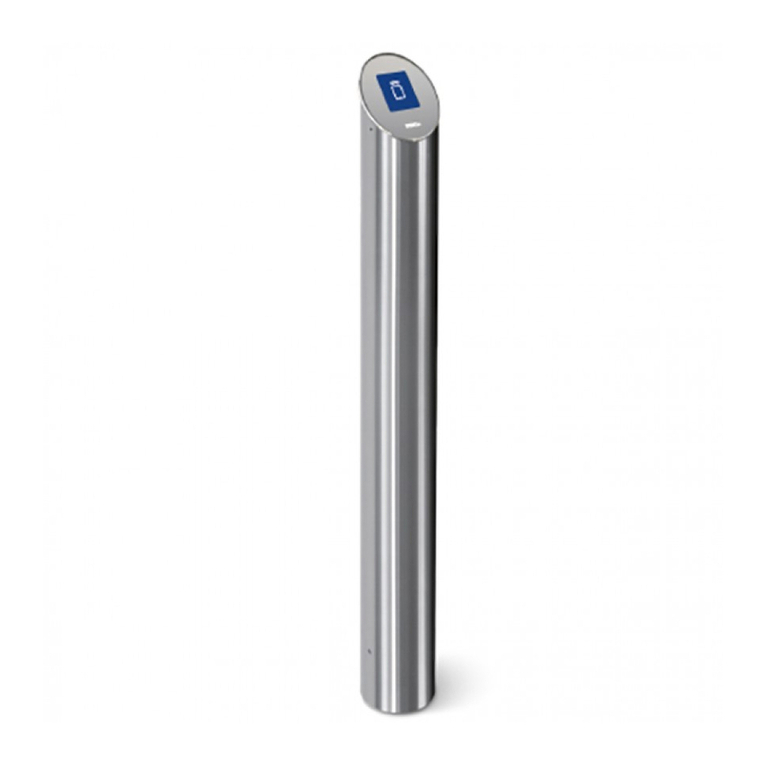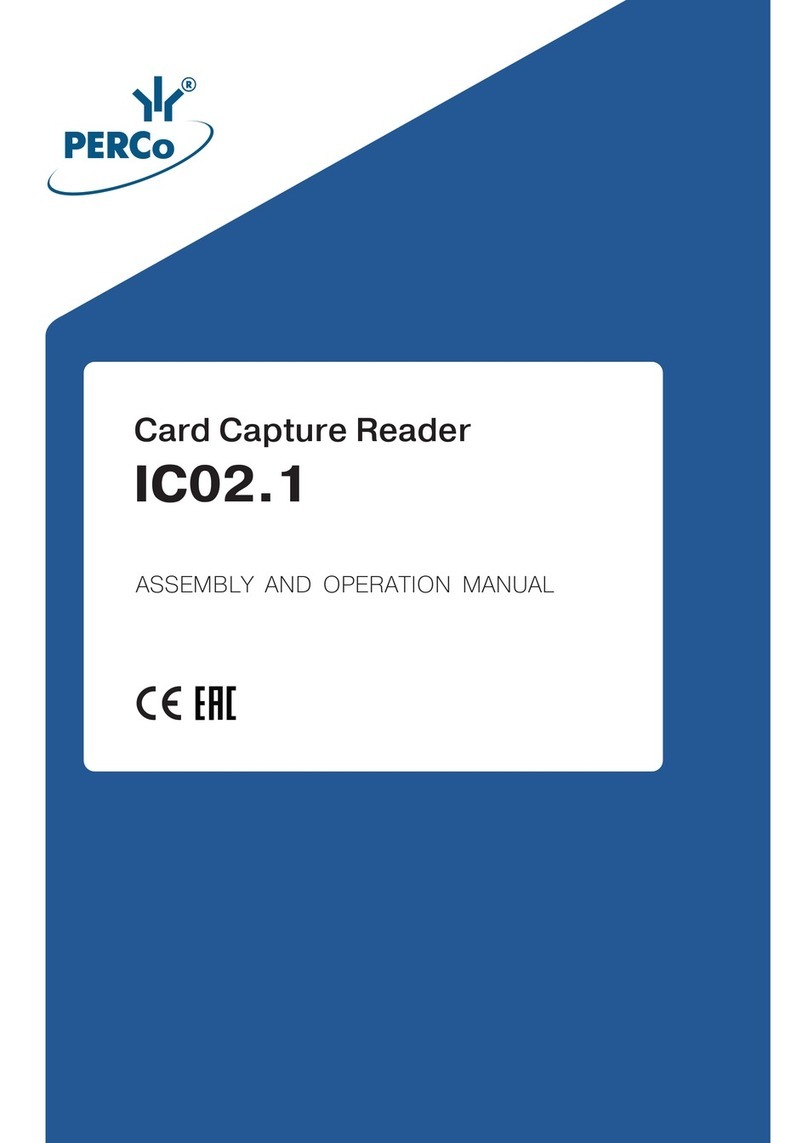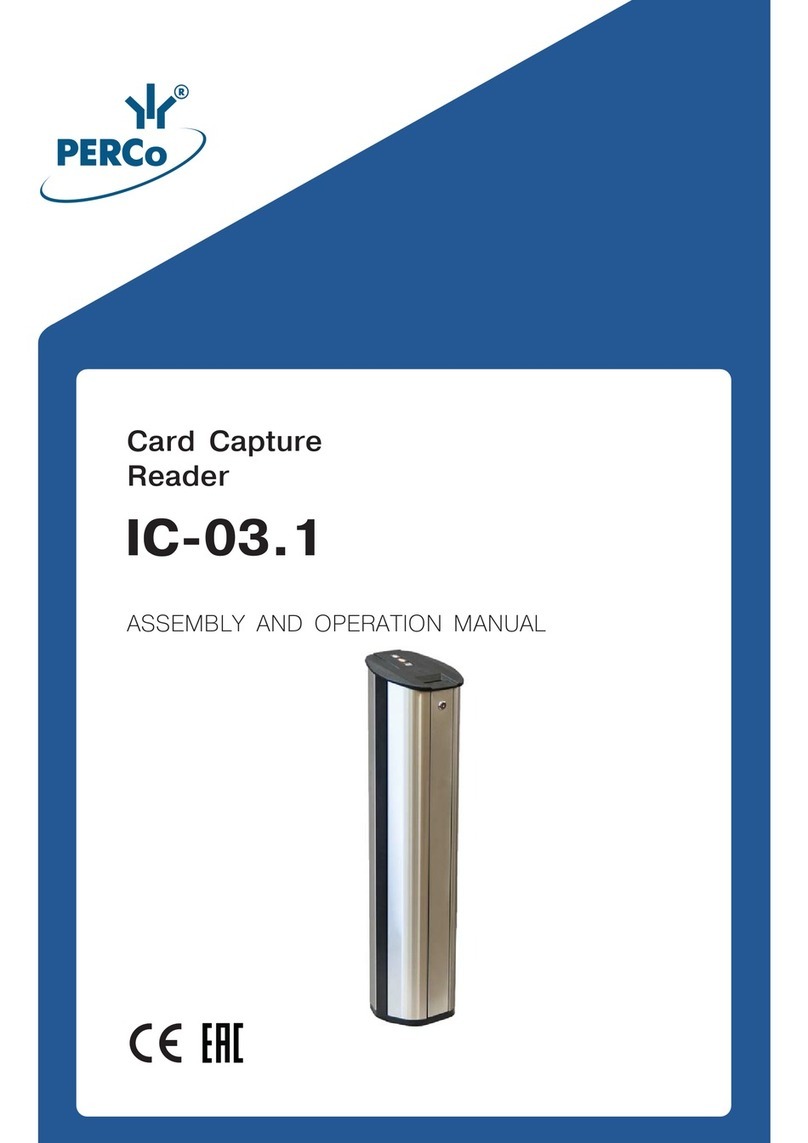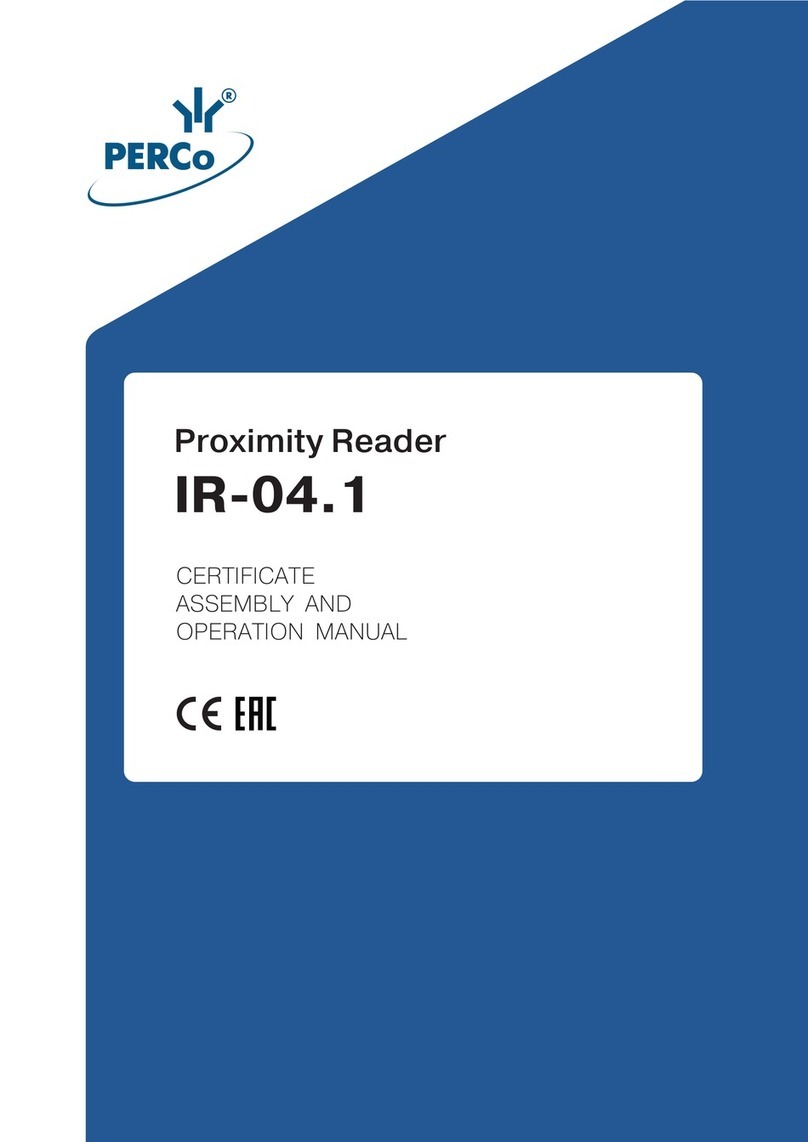Certificate & Operation Manual
2. TECHNICAL SPECIFICATIONS
Rated operating voltage......................................................................................... 12VDC
Operating voltage limits............................................................................... 10.5 – 14VDC
Consumption current ........................................................................................ max. 60 mA
Power consumption ......................................................................................... max. 0.85 W
Card reading distance at the rated operating voltage for different card (trinket) types:
HID ProxCard II cards .............................................................................. min. 6 cm
EM-Marin cards ........................................................................................ min. 8 cm
Trinkets .................................................................................................... min. 4 cm
Card reading distance at reader mounting on metal base-plate for different card (trinket)
types:
HID ProxCard II cards .............................................................................. min. 5 cm
EM-Marin cards ........................................................................................ min. 7 cm
Trinkets .................................................................................................... min. 3 cm
Controller connection interface ............................................................................. Wiegand
Output and operation signal voltage:
Logic «1» ................................................................................................. min. 4.3 V
Logic «0» ................................................................................................ max. 0.4 V
Distance between the reader and external controller ........................................ max. 150 m
Connection cable standard length .............................................................................. 0.9 m
Ingress protection rating ........................................................................... IP54 (EN 60529)
Electric shock protection class ...................................................................... III (IEC 61140)
Resistance to mechanical factors, according to GOST17516-72 .................................... M4
Reader dimensions (without cable) ............................................................. 1454623 mm
Reader weight .................................................................................................... max. 220 g
3. DELIVERY SET
Reader RP-15.2 ............................................................................................................ 1
Metal base-plate ........................................................................................................... 1
Assembly set:
Plastic dowels ..................................................................................................... 4
Screws ................................................................................................................ 4
Package ........................................................................................................................ 1
Certificate and Operation Manual ................................................................................. 1
As a power supply it is recommended to use DC source with linear voltage stabilization and
output pulsation amplitude max. 50 mV.
4


































